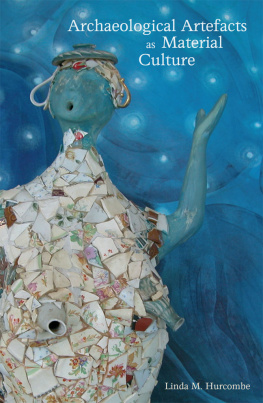ACROSS ATLANTIC ICE
The Origin of Americas Clovis Culture
Dennis J. Stanford
Bruce A. Bradley
Foreword by Michael B. Collins

University of California Press, one of the most distinguished university presses in the United States, enriches lives around the world by advancing scholarship in the humanities, social sciences, and natural sciences. Its activities are supported by the UC Press Foundation and by philanthropic contributions from individuals and institutions. For more information, visit www.ucpress.edu .
University of California Press
Berkeley and Los Angeles, California
University of California Press, Ltd.
London, England
2012 by The Regents of the University of California
Library of Congress Cataloging-in-Publication Data
Stanford, Dennis J.
Across Atlantic ice : the origin of Americas Clovis culture / Dennis J. Stanford, Bruce A. Bradley ; foreword by Michael B. Collins.
p. cm.
Includes bibliographical references and index.
ISBN 978-0-520-22783-5 (cloth : alk. paper)
1. Clovis culture. 2. Human beingsMigrations. 3. Indians of North AmericaTransatlantic influences. I. Bradley, Bruce A., 1948 II. Title.
E99.C832S73 2012
Manufactured in the United States of America
21 20 19 18 17 16 15 14 13 12
10 9 8 7 6 5 4 3 2 1
The paper used in this publication meets the minimum requirements of ANSI/NISO Z39.481992 (R 1997) (Permanence of Paper).
CONTENTS
by Michael B. Collins
ILLUSTRATIONS AND TABLES
FIGURES
TABLES
PREHISTORIC TIME LINE
11,700present years BP | Holocene |
12,50011,000 years BP | Post-Clovis fluted and unfluted (Late Paleo-American) culture |
12,80011,500 years BP | Younger Dryas |
13,20012,500 years BP | Clovis (Middle Paleo-American) culture |
13,50011,000 years BP | Nenana-Denali (Beringian Paleo-American) culture |
14,70012,700 years BP | Blling interstadial |
16,80013,200 years BP | Proto-Clovis (Southeast Early Paleo-American) culture |
24,00016,800 years BP | Mid-Atlantic Early Paleo-American culture |
24,50018,000 years BP | French and Northern Spanish Solutrean culture |
25,00013,000 years BP | Last Glacial Maximum (LGM) |
110,000 years ago to present | Last glacial period |
2.58 million years BP | Pliocene-Quaternary (current ice age) glaciation began |
FOREWORD
Across Atlantic Ice is an account of two complex and treacherous journeys, one long ago and the other very recent. One is postulated to have occurred across a perilous mosaic of periglacial environments of the Northern Hemisphere during the peak of the last major glaciation some eighteen or twenty millennia ago. The other is a twenty-year intellectual excursion far outside the academic mainstream by two scholars to explore possible answers to the questions of who first came to the Americas, when, whence, and how.
We long thought that we knew the story of the initial peopling of the Americas: Nomadic mammoth hunters moved out of the Russian steppe, across the ice age Bering land bridge, down an ice-free corridor between the major ice sheets of Canada, and onto the northern Great Plains. This brought them to an American Serengeti of giant bison, mammoth, mastodon, horse, camel, and many other worthy game animals. Once in America some 13,500 years ago, these big game hunters coined a new technology, dubbed Clovis by archaeologists who crafted the romantic notion that these specialized hunters were the first Americans. This story has been dying slowly over the past thirty or so years and is now defunct. However, no consensus theory has replaced Clovis First in spite of a large, vigorous, diverse, and sometimes contentious cadre of scholars in many fields of science looking for the evidence to set the story straight.
This is not a trivial quest, because the Western Hemisphere affords 25 percent of the habitable surface of the earth and was colonized quite late in human history. What people were doing across the entire Northern Hemisphere over the past 50,000 years or so is the focus, along with what the changing terrestrial and marine environments of that expanse of time and space were like.
Relevant data from archaeology, earth sciences, human DNA, and other fields are cascading in at such a startling pace that almost all of the targets are moving almost all of the time. And its not just the data that are changing; the concepts, techniques, and tools scholars use are improving almost daily. This is an exhilarating time in an exciting pursuit.
Dennis J. Stanford and Bruce A. Bradley draw on ethnography (some of it their own), archaeology (some of it their own), paleoclimatology, oceanography, geology, experimentation (some of it their own), human biology, and more to formulate a hypothesis that accounts for why the Americas seem to have been first peopled during the last glacial period and evidently by way of the harsh artic realm. Since humankind has evolved and thrived in tropical and temperate climes for more than 98 percent of its existence, the circumstances that drove this expansion of range must have been extraordinary.
Extraordinary they were, with great expanses of the earth falling barren under the advance of glaciation, pushing humans into refugia including the continental margins of southwestern Europe and eastern Asia. From these ocean edges, people were drawn toward enormous populations of marine invertebrates, fish, mammals, and birds, particularly in the northerly latitudes. Boats were needed, tailored clothing that was insulated and waterproof was imperative, ingenuity and new knowledge were essential, and new harvesting technologies were required. So with both a push and a pull, the rich maritime environments of the North Pacific and the North Atlantic increasingly became part of the human niche. As people expanded this niche, it brought them to the shores of North Americathe immense human journey across the globe had reached a new continent, whence it continued until the Americas were fully colonized. This new story is at the moment just an outline, and filling it in is the ongoing work of many scholars. Their efforts have been productive because they have approached the peopling of the Americas as a process rather than an event.
Among this throng of scholars, Dennis and Bruce have tackled the specific question of the origin of Clovis and here formulate a hypothesis that its technological antecedents reached North America from across the North Atlantic and out of Cantabrian Solutrean roots of circa 18,000 years ago. The technology continued developing in eastern North America, ultimately becoming what we call Clovis. This is a hypothesis worthy of full testing.
Already, in fact, testing is under way. For example, based primarily on nascent accounts of this hypothesis published by Dennis and Bruce in 2004 and 2006 in World Archaeology







